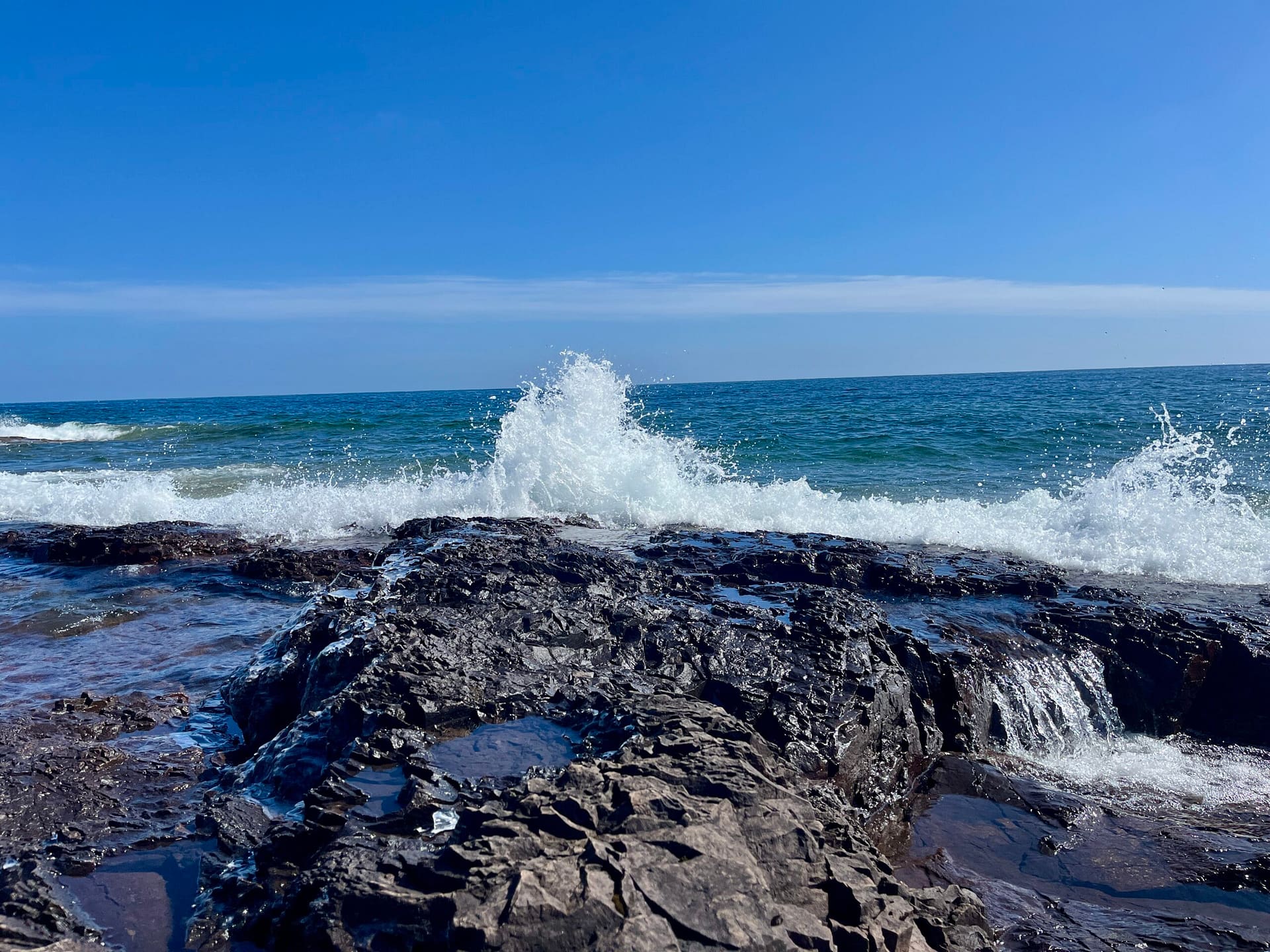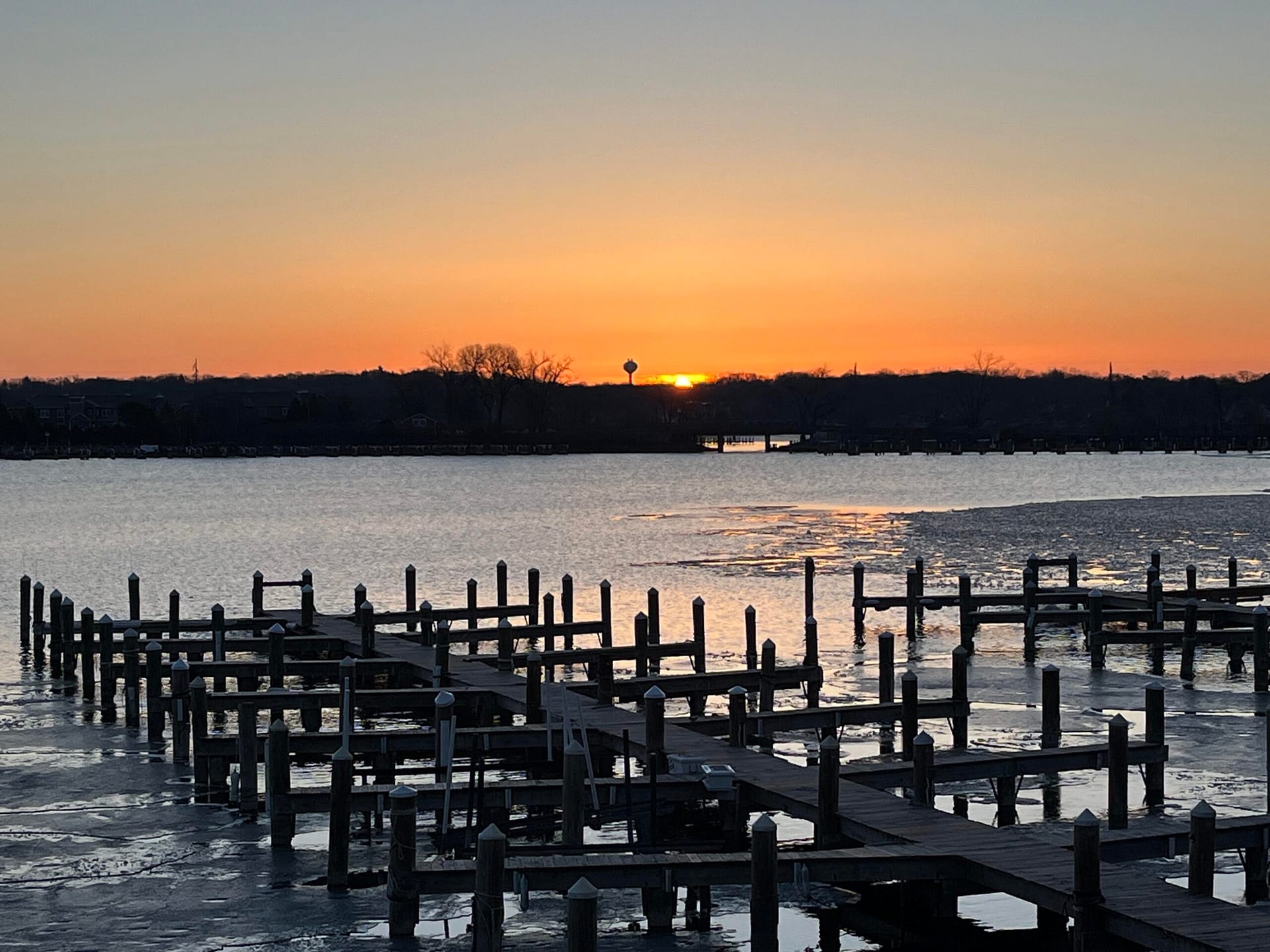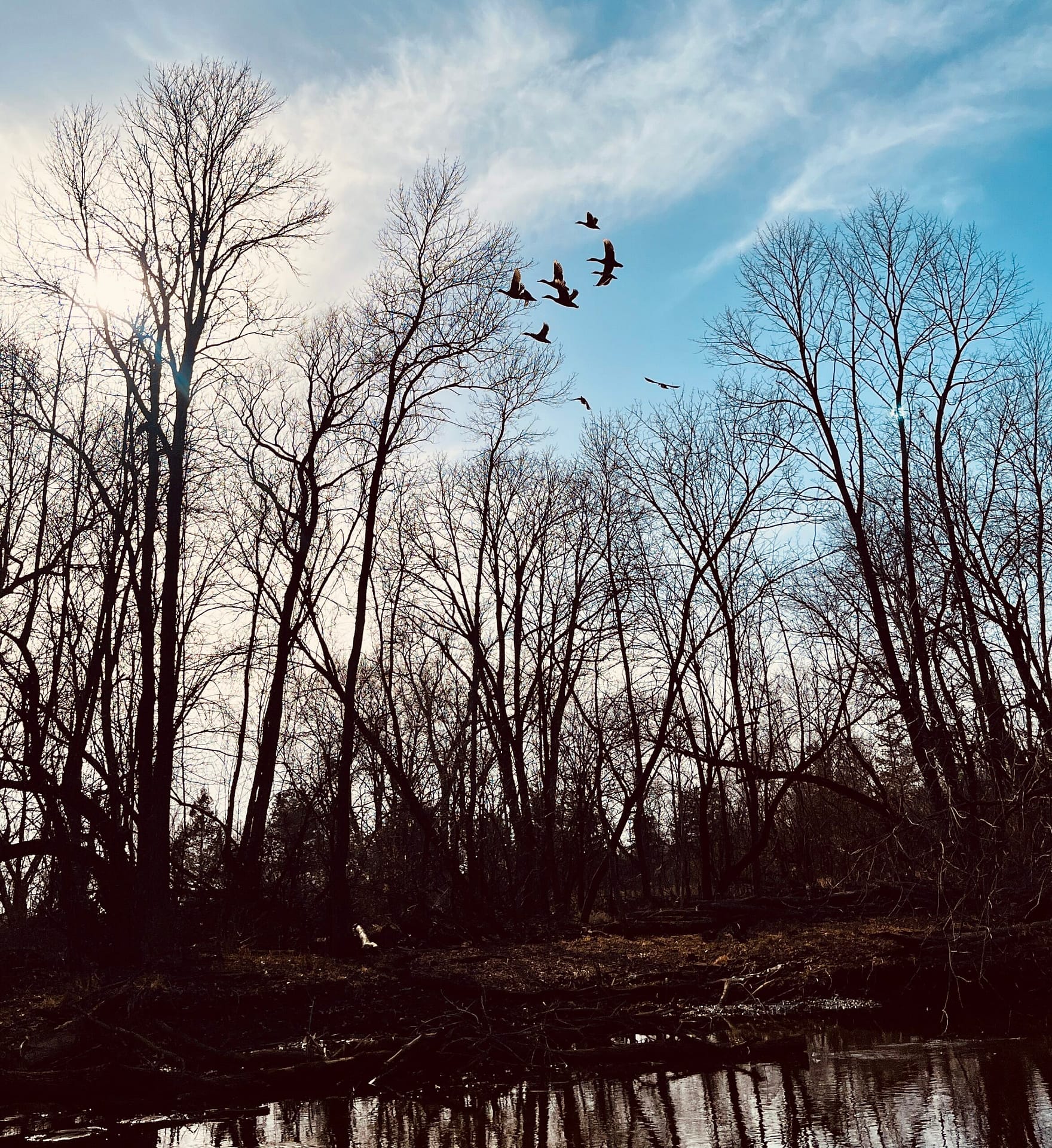In my last post I introduced a book—Rooted in Nature: Observations from the Wild—and a writing method I call live writing. The book is a result of nature exploration and using this method. Today, I’m going to show some examples of live writing I conducted this week while out enjoying nature.
Live writing is a method I developed during my six years as a nature columnist. I’m not saying the method hasn’t been used by others, or I invented it, just that I figured it out for myself at some point.
My column ran weekly in a local newspaper. Each week I would explore the woods, waters, or prairies in my area. I’d hike, snowshoe, kayak, canoe, or bushwhack through dense woods. There was always something that presented itself, like a family of foxes or a carpet of trilliums (a common flower where I live), that I could use for observation and writing my column.
After a few months of nature writing, I realized it wasn’t easy to recall exactly what I had seen. After being outside and taking notes, I’d go home, conduct any necessary research, and write. The problem was my notes were not as detailed as I wanted.
Enter live writing!
One day, while in the woods, I decided to open the Notes app on my phone and record my observations by talking into it. I realized, as I spoke, I could describe my surroundings—colors, smells, sounds—in detail. Upon arriving home to write, I transferred the notes into a Word doc and edited, creating the column. It was revolutionary for me! Readers started telling me they felt as if they were in the woods, on the water, or watching an animal with me.
Not only did live writing improve my writing, but it also helped my readers enjoy nature more, in the pages of a newspaper. Win-win!
This Week’s Live Writing
The other day, I took a long bike ride and stopped by the Mississippi River to make some observations and practice live writing. Following are my notes before edits and the prose after edits. A writer’s “before and after” if you will. Brace yourself, the “before” is rough. It is sometimes nonsensical and far from reader ready. I don’t worry at all about spelling or grammar. I simply speak words and phrases into my phone, then edit later for the finished product.
Live Writing Near the Mississippi River
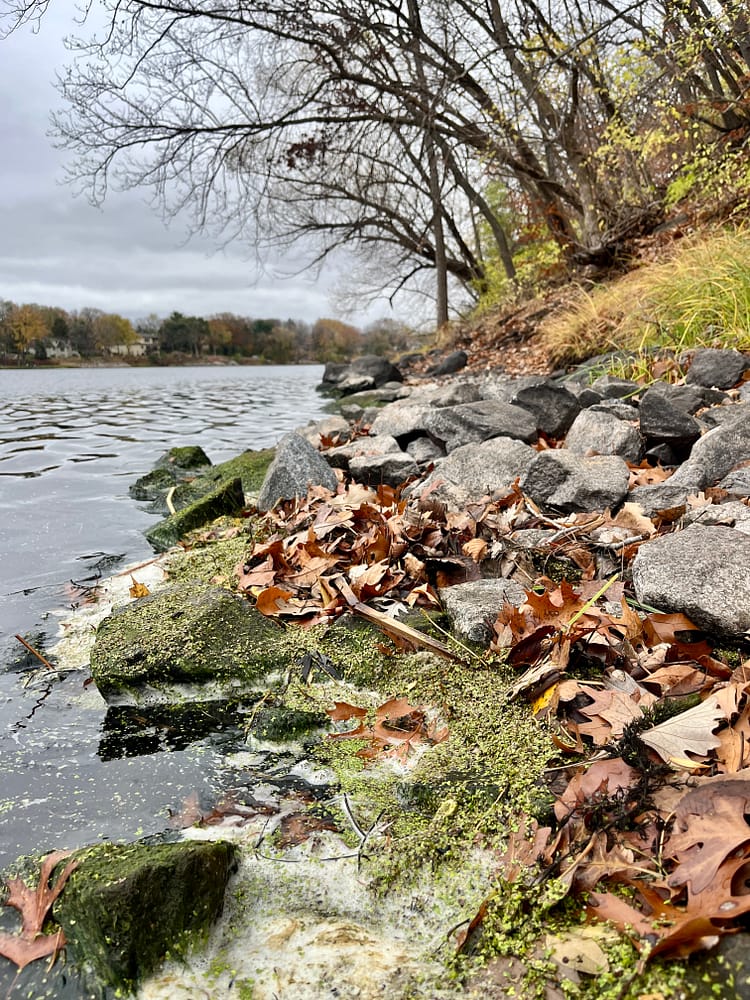
Before:
The Mississippi river. Through town under a bridge and into a wooded area suitable for relaxing mind. Ripples skid along the rocky shore, gray rocks, deadwood, remnants of summer in the grass, mostly brown now with patches of green and littered with fallen leaves. Hug, the meandering Rocky shoreline, our Oaks, mostly bare of leaves. I follow it east and enjoy a breeze that brushes my face. Although the faint sound of traffic can be heard in the wind, the river is flooding my mind with sites of nature. Ripples flow, gently moving toward its destination. And my destination? I don’t really have one. I’m just following the river as it lures me further and further from town.
After:
The other day, I took a bike ride along the Mississippi River, through town, under a bridge, and onto a path that led along the waterway. Away from town, woods grew dense, and traffic noises faded. All around were sights and sounds of nature.
I parked my bike and walked along a rocky shore where water-ripples licked the bank and deadwood knocked against gray rocks. Remnants of summer—grasses fading from green to tan to brittle brown—disappeared under autumn’s shed, fallen leaves from oaks and other hardwoods.
Following the river, a cool breeze brushed my face, and I wondered at the river’s destination. Always moving toward a destination. And I realized I didn’t have one—a destination—but simply felt compelled to follow the river as it lured me away from town.
Live Writing about a Leaf
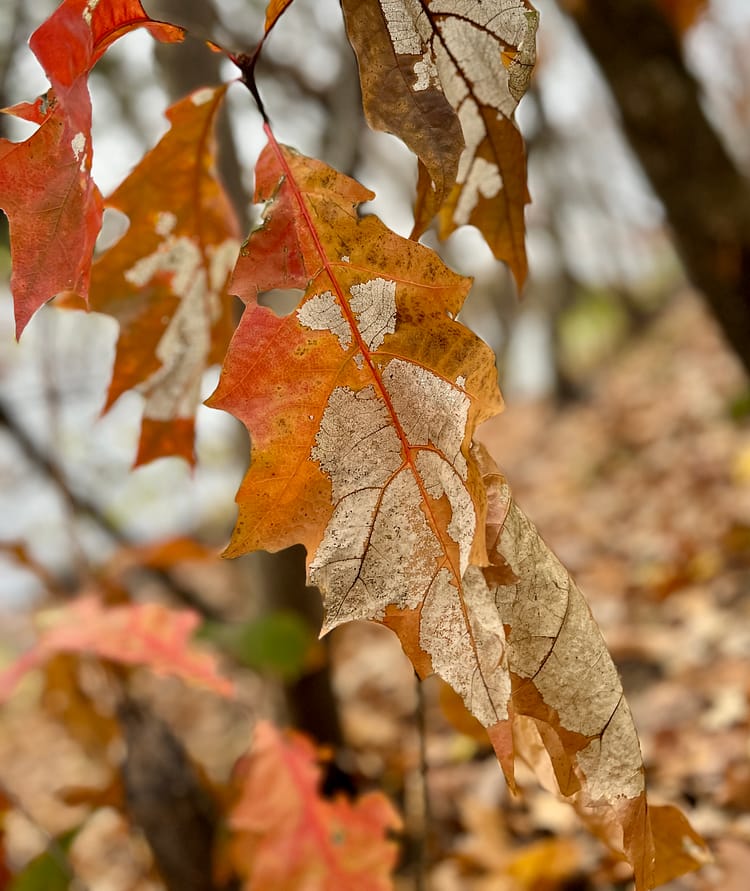
Before:
The decay of fall. It is evident in these leaves once green, burnt orange and red and browns, the decaying parts remind me of a potato. Russets. Patchy. It is lacey and tan and is that holey or opaque or what is it? Is it decay in the autumn season. Oak tree. Type?
After:
Along the Mississippi, Northern red oak leaves transform into shades of burnt orange, berry red, and russet. The tan and browned parts remind me of potato skin, thin and rough. The tanning color in the center of the leaf is almost like lace, delicate and intricate. I marvel at the beauty found in autumn’s decay.
Live Writing about Algae in the River

Before:
The dirt and the muck and the algae collect along the edge of the river. And the mallards seem to love it. I wonder if they are on their way south. This Mississippi, their flyway to wintering spots. I look at the swirls of the foam – dirt – algae and marvel at how it looks. Half a foot up, the rock’s algae cling to the side as if trying to climb out. The color of the algae looks chartreuse, olive, some sort of tan, in the areas where it floats alone in stagnant blankets of, what is algae? The river smells fishy.
After:
Dirt and muck—furry slime—and algae collect along the edges of the river, forming swirls and shapes. An art form along the shores of the Mississippi. The river ripples and moves, but the floating art remains still, chartreuse and olive and marzipan colors. I marvel at its beauty.
Live Writing about Mallards
Before:
Rump up duck. I watch the mallards paddle on the river. four females and four male mallards. They’re feeding, duck suppertime. One of the females is a dunker. It reminds me of my grandpa with his coffee and donuts. Dunk, dunk, dunk. She’s more aggressive at dunking than the others. Her butt goes vertical in the air when she does it. Maybe she’s mooning me
They’re swimming in pairs here. I wonder about that so I decide to take a look. Research here.
At one time two pair swim across to the other side to meet others and they are in a row. Perhaps the only time today any ducks have been in a row in my life. And one pair decides to play a game and the female almost walks on water as the male playfully chases her. At least I think it’s playful. They swim away from me now, further upstream, and I watch four green heads and four brown heads moving away, but still eating on their journey.
The ducks swim along without a care in the world, at least that’s how it seems. They are wary of me, however, the place I sit, on the slab of rock that jets out into the river, was where they were before I started watching. Now they are too far for me to get a decent picture.
And as I sit quiet and still waiting for them to come closer, I noticed something. I am at ease. A cool wind, close my hair back and out my sleeves of my windbreaker as I sit with my knees hug to my chest. It’s not too cold out, actually really nice temperature for a bike ride and a nice temperature to sit on a rock by the river watching the ducks. They have no idea what kind of affect they have on me and how their presence brings a smile to my face and a piece that settles in my belly and although the sky is fading, I don’t want to leave. Out here in nature, with the oaks in the river and the ducks, the flow of the water the sound of the dam the lazy clouds slowly moving across the sky. This is where I want to be. This is life. This is living. This is peace.
After (for this one I stuck closer to my notes):
I watched mallards paddle on a river, eight of them, with half of them females. They are brown, and the males are brilliantly colored, with glossy green heads and chestnut breasts. The mallards were feeding. Duck suppertime and one of the girls was a dunker. Her duck-butt went vertical in the air when she went beneath to eat. It reminded me of my grandpa with his coffee and donuts. Dunk, dunk, dunk.
They swam in pairs. I wondered about that, so far from breeding season. I found out they form pair bonds this time of year. Duck love that will blossom in springtime.
At one time, four swam across the river to meet others. They swam in a row. I smiled to think that was the only time that day ducks were in a row in my life. Swimming away from me, further upstream, I watched four green heads and four brown heads move away.
The ducks swam without a care in the world, at least that’s how it seems. I was a concern, though. They didn’t seem to enjoy my company, so they went to a more carefree duck-spot. I sat still on my rock slab and watched, waiting for them to come closer.
As I waited, I noticed something.
I was at ease.
A cool wind brushed my hair back and another crept up the sleeves of my windbreaker, making my arm cold. I hugged my knees to my chest and kept watching the ducks.
They had no idea what kind of effect they had on me, how their presence brought a smile to my face and a happy mood that settled in my belly. The sky was dimming, but I didn’t want to leave. Out there in nature, with the oaks and the river and the ducks, the flow of the water beneath and lazy clouds above, slowly moving across the sky.
I thought, this is where I want to be.
This is life. This is living. This is peace.
I Hope You Try Live Writing!
I hope you are inspired by this display of live writing. I have a great time conducting the practice as nature calms my mind and I get material for my writing habit.
If you are a writer yourself, give it a try. You will find your writing come to life in a new way. Maybe you already practice your own version of live writing.
Whatever you decide—to write or not to write—get outside if you can. Listen to the sounds of autumn. Watch some ducks. Sit by the water. Enjoy nature and all it has to offer!
